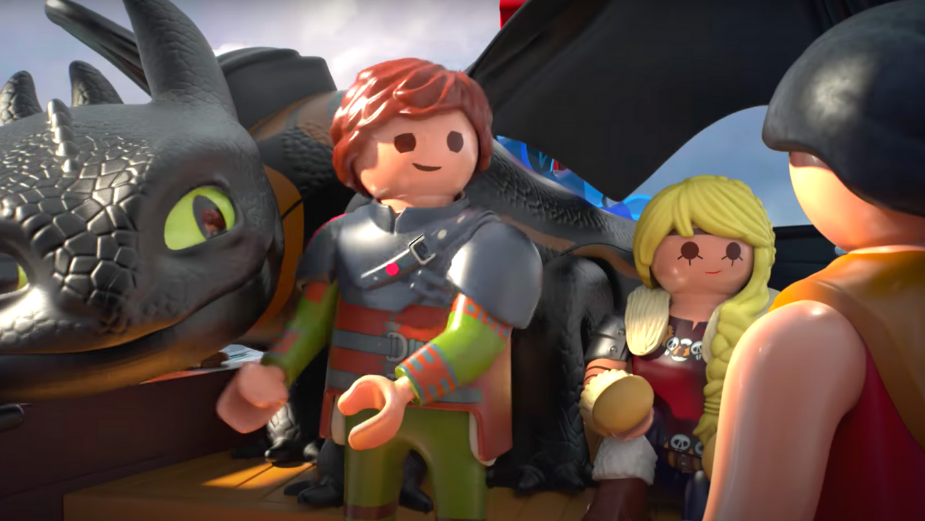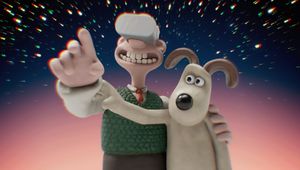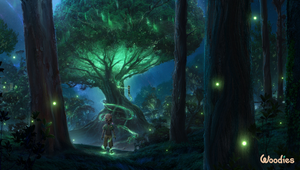
The Playful Art of Bringing Toys to Life

Seeing your favourite toys come to life on screen is a fascinating experience for any child. And for the creators working their magic behind the scenes to bring these dreams into reality, the process is just as exciting.
For over seven years, global toy brand Playmobil has entrusted its collection of animated commercials, shorts and trailers to the exceptional team at independent production company and studio for animated content, Woodblock, who consider Playmobil as one of their longest standing clients. Executing unique episodes and background stories for the huge variety of toy collections that Playmobil offers, the work’s scope is comparable to a classic serial development.
For their work with Playmobil, the Woodblock team is led by creative director Regina Welker, who holds a very close connection to the brand and is involved from concept and development stage right through to writing scripts and the final production. “The relationship with Playmobil is very special,” she shares. “There is no agency involved and we join the whole process at a very early stage. Of course, it is still commissioned client work, but as we collaborate very closely and develop everything from script to design and final production, it actually feels much more as if we are producing an independent artistic film.”
Reality vs Make Believe
With her diverse experience in animation, Regina is equipped with the intricacies every good animation needs in order to resonate with its audience. “Bringing character toys to life is the dream for many animation filmmakers as you can set free your inner child. The key to an appealing story is to have interesting characters with strong backgrounds and then combining them with problems the audience can identify with. Playmobil always was and is a very open and international company so their characters are very diverse and it is always a big topic when the toy collections come together. This is ideal for creating stories because there are so many possibilities for characters.”
She continues: “In films for kids, the conflicts need to be comprehensible but the stories can’t be too simple - kids are smart and have more fun with complex stories. Finding the right balance is the challenge here. And of course I always like it best when the adults can also watch and enjoy the films with the same fun and emotion.”
When it comes to her number one rule for animation, Regina picks exaggeration. “You need to have that element of exaggeration for a fun animation - if you are just rebuilding reality you could shoot it. Saying that, there is a thin line between the two, because if you overdo exaggeration you can also lose the magic,” she says. “Camerawork is a good example here. I love using more realistic cameras to get more space for exaggeration in the characters and animation itself.”
Art director and head of animation, Alex Dietrich agrees: “Everything we do has to be grounded in reality somehow to make it believable. A lot of the production resembles how you’d shoot a live-action-film and we try to match our camera moves to ones that would be possible to do on a real set. But every now and then we are able to exaggerate and use the benefits of animation in storytelling. For example, when someone runs really fast, we make it more entertaining by animating it in a way that nobody could run in real life on set.”
To help create movements and toys that look believable, the team sometimes start by referencing recordings of themselves acting out the scenes. “We can then take that inspiration and animate it with the motion range of a real Playmobil figure,” Alex explains. “For example, when a character picks something up we can add a humorous aspect to it because Playmobil characters have no fingers. It’s little details like this that add to the believability of the Playmobil world our stories take place in.”
Production coordinator Christian Zehetmeier says: “The whole storyboarding process itself takes around half a year until everyone is happy with the screenplay. Pre-production and production then takes around 6-8 months depending on the team size and release date.”
Building the Dream Team
When Woodblock first took on Playmobil as a client, they faced the challenge of keeping the perfectly reduced design of the original toys intact whilst bringing the characters alive in a believable way. “We really tried a lot to add humor in reduced movements but also make it feel natural,” Regina comments. “On the organisation side, I knew from the start that we needed to build a perfect team with key lead positions in order to pull this off smoothly. Over the years, the crew members have become friends so working together hand in hand has a very special flow.”
Technical director Georg Schneider adds: “It's always quite challenging to create a relatively large project with a very small team. This wouldn't be possible if every member of our team didn’t pull together to create something amazing. As character technical director, I enjoy looking for solutions of creative and technical challenges. For example, it wasn't easy to build the faces of the characters in a way that gives the animators everything they need to bring them to life. It took a lot of experimentation and experience to perfect that.”
“My favourite part is when the compositing is complete,” says Alex. “By then I haven’t seen the movie since it's been animated in grayscale with only basic geometries. After not seeing it for a couple of weeks, everything all of a sudden looks so lively and beautiful. That’s always a great moment.”
“For me, it’s the story building process and then editing the animatics when you can still change scenes and switch story points to experiment how the film works best,” says Regina. “The team is super rehearsed and we have so much fun creating new and exciting animated films. This enjoyment and love for animation is always visible in the films that we create”










